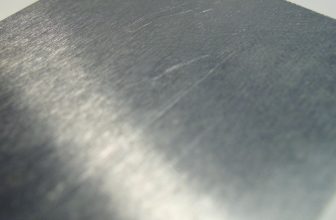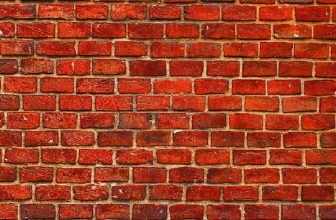How to Clean Ignition Coil
Maintaining a smoothly running vehicle is a priority for any car owner, and one critical component in this pursuit is the ignition coil. The ignition coil plays a pivotal role in the ignition system, transforming low-voltage power from the battery into the high-voltage spark needed to ignite the fuel-air mixture in the engine cylinders. Over time, ignition coils can accumulate dirt, grease, and other contaminants that may compromise their performance.

Cleaning the ignition coil is a practical and cost-effective measure to ensure optimal engine function and fuel efficiency. In this guide, we will explore how to clean ignition coil, empowering car enthusiasts and DIY mechanics with the knowledge to maintain a clean and efficient ignition system, ultimately contributing to a smoother and more reliable driving experience.
Importance of Maintaining a Clean Ignition Coil
One of the most important components in a car’s ignition system is the ignition coil. It plays a crucial role in starting and running the engine by converting low voltage current from the battery into high voltage electricity that is needed to create a spark in the spark plugs. This spark ignites the air-fuel mixture, allowing combustion to occur and power your vehicle.
While many car owners may overlook the importance of maintaining a clean ignition coil, it is actually essential for proper engine function and overall vehicle performance. Over time, the ignition coil can become dirty or damaged due to exposure to heat, oil, and other contaminants. This can result in decreased power, misfiring, and even complete engine failure.
Regularly cleaning your car’s ignition coil can prevent these issues and keep your vehicle running smoothly. In this article, we will discuss the steps on how to clean ignition coil and why it is important for the health of your car.
Signs of a Dirty or Failing Ignition Coil
An ignition coil is one of the essential components in your car’s engine. It is responsible for converting the voltage from your battery into a high-voltage spark that ignites the air and fuel mixture in the combustion chamber. This process powers up your engine and makes it run smoothly.
So, how do you know if your ignition coil needs cleaning or replacing? Here are some signs to look out for:
- Engine Misfiring: If the engine is misfiring or stuttering, it could be a sign of a failing ignition coil. The spark from the coil is necessary for combustion to occur, so when it’s not working correctly, the engine will misfire or fail to start.
- Poor Fuel Economy: A dirty or failing ignition coil can also result in poor fuel economy. When your engine isn’t receiving enough voltage, it may require more fuel to perform efficiently, leading to increased gas consumption.
- Difficulty Starting the Engine: A failing ignition coil can also make it challenging to start your engine. If you’re experiencing difficulty starting your car, especially when the engine is cold, it may be a sign that your ignition coil needs cleaning or replacement.
- Check Engine Light: In most modern vehicles, the check engine light will turn on if there’s a problem with the ignition coil. If you notice the check engine light is on and your car is exhibiting any of the other signs mentioned, it’s best to have your ignition coil checked.

10 Methods How to Clean Ignition Coil
1. Cleaning with a Vacuum
Cleaning your ignition coil with a vacuum is one of the easiest and most effective methods. To do this, simply turn off your engine and remove the ignition coil from its bracket. Then, use a vacuum cleaner to suck up any dirt or debris that may be present. Make sure to get into all the crevices and corners of the coil to ensure it is completely clean.
2. Cleaning with a Brush
Using a brush is another effective way to clean an ignition coil. Start by removing the coil from its bracket, and then use a soft-bristled brush to gently scrub away any dirt or debris that may be present on the surface of the coil. Be sure not to scrub too hard, as this can damage the delicate components inside the coil.
3. Cleaning with Compressed Air
Compressed air can also be used to clean an ignition coil. Start by removing the coil from its bracket and then use compressed air to blow away any dirt or debris that may be present on the surface of the coil. Be sure not to hold the air too close, as this can cause damage to sensitive components inside the coil.
4. Cleaning with Electrical Contact Cleaner
Using an electrical contact cleaner is another great way to clean an ignition coil. Start by removing the ignition coil from its bracket and then spray the electrical contact cleaner onto a cloth or paper towel. Gently wipe down all surfaces of the ignition coil with this cloth or paper towel, making sure not to miss any crevices or corners where dirt might have accumulated over time.
5. Cleaning with White Vinegar
White vinegar is also an effective way to clean an ignition coil, as it helps loosen dirt and grime buildup on its surface without damaging any delicate components inside it. To do this, start by removing your ignition coil from its bracket and then pour some white vinegar onto a cloth or paper towel and gently wipe down all surfaces of your ignition coil until they are clean and free of dirt and grime buildup.

6. Cleaning with Baking Soda
Baking soda is another great option for cleaning your ignition coils because it helps remove grease buildup without damaging any delicate components inside them, while also leaving behind a pleasant scent in your engine compartment when you’re done cleaning them up!
To do this, start by removing your coils from their brackets and then mix some baking soda with some water in order to create a paste-like consistency before applying it directly onto each individual surface of your coils using either a cloth or brush until they are completely covered in baking soda paste before wiping them off using either warm water or white vinegar afterwards in order for them to shine like new!
7. Cleaning with Isopropyl Alcohol
Isopropyl alcohol is another great option for cleaning your coils because it helps dissolve grease buildup without damaging any delicate components inside them while also leaving behind no residue when you’re done cleaning them up!
To do this, start by removing your coils from their brackets before spraying some isopropyl alcohol onto each individual surface of your coils using either a cloth or brush until they are completely covered in alcohol before wiping them off using either warm water afterwards in order for them to shine like new!
8. Cleaning With Engine Degreaser
Engine degreaser is another great option for cleaning your coils because it helps break down grease buildup without damaging any delicate components inside them while also leaving behind no residue when you’re done cleaning them up!

To do this, start by removing your coils from their brackets before spraying some engine degreaser onto each individual surface of your coils using either a cloth or brush until they are completely covered in degreaser before wiping them off using either warm water afterwards in order for them to shine like new!
9. Cleaning With WD-40
WD-40 is another great option for cleaning your coils because it helps break down grease buildup without damaging any delicate components inside them while also leaving behind no residue when you’re done cleaning them up!
To do this, start by removing your coils from their brackets before spraying some WD-40 onto each individual surface of your coils using either a cloth or brush until they are completely covered in WD-40 before wiping them off using either warm water afterwards in order for them to shine like new!
10. Cleaning With Brake Parts Cleaner
Brake parts cleaner is another great option for cleaning your coils because it helps break down grease buildup without damaging any delicate components inside them while also leaving behind no residue when you’re done cleaning them up!
To do this, start by removing your coils from their brackets before spraying some brake parts cleaner onto each individual surface of your coils using either a cloth or brush until they are completely covered in cleaner before wiping them off using either warm water afterwards in order for them to shine like new!

Conclusion
In conclusion, cleaning your ignition coils on a regular basis can help you maintain the performance of your vehicle. Taking preventative steps will save you more money in the long run and typically requires just a few materials that you probably already have at home. Plus, if you take the time to clean out your ignition coils yourself, it’s an incredibly rewarding feeling—plus, there’s no better way to brag to your friends about how much of a car master you are!
So if you’re ready to get started with learning how to clean ignition coil, there’s a wealth of knowledge available online waiting for you. Dedicate yourself to proper maintenance and care, and your car will serve as your faithful companion for years to come!




